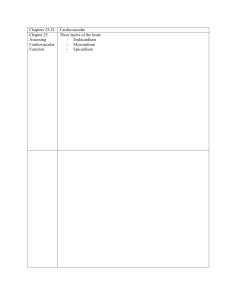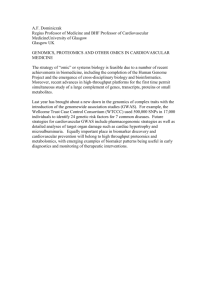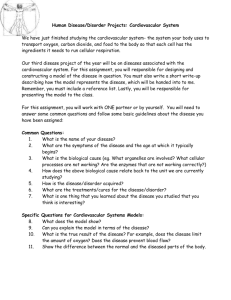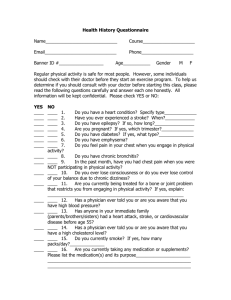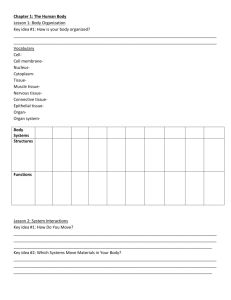Cardiovascular_textbook_worksheet
advertisement
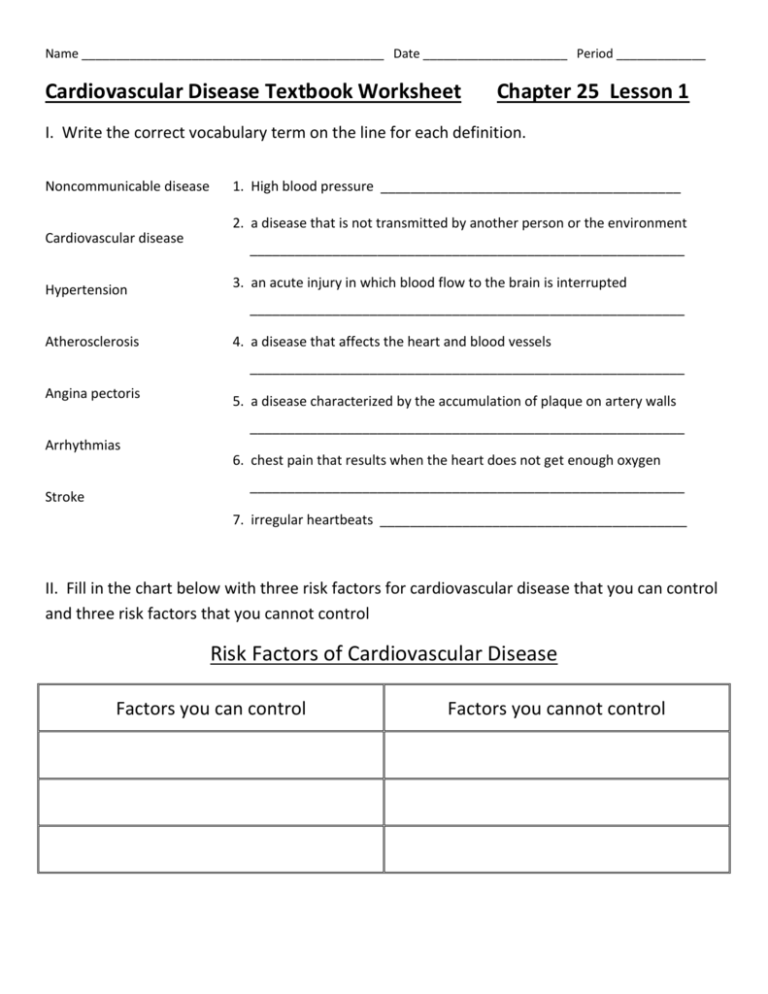
Name ____________________________________________ Date _____________________ Period _____________ Cardiovascular Disease Textbook Worksheet Chapter 25 Lesson 1 I. Write the correct vocabulary term on the line for each definition. Noncommunicable disease Cardiovascular disease Hypertension 1. High blood pressure ________________________________________ 2. a disease that is not transmitted by another person or the environment __________________________________________________________ 3. an acute injury in which blood flow to the brain is interrupted __________________________________________________________ Atherosclerosis 4. a disease that affects the heart and blood vessels __________________________________________________________ Angina pectoris 5. a disease characterized by the accumulation of plaque on artery walls __________________________________________________________ Arrhythmias Stroke 6. chest pain that results when the heart does not get enough oxygen __________________________________________________________ 7. irregular heartbeats _________________________________________ II. Fill in the chart below with three risk factors for cardiovascular disease that you can control and three risk factors that you cannot control Risk Factors of Cardiovascular Disease Factors you can control Factors you cannot control III. Write the letter of the disease, diagnostic tool, or treatment in the space next to its description. _______ 1. Occurs due to insufficient blood supply to the heart _______ 2. Uses powerful magnets to produce images of internal organs _______ 3. Tube with a balloon inserted into a blocked artery _______ 4. Slow weakening of the heart over time so that it can no longer maintain its regular pumping rate and force a. electrocardiogram (EKG) b. magnetic resonance imaging (MRI) c. coronary bypass d. pacemaker _______ 5. Graphs the heart’s electrical activity e. heart attack _______ 6. A device implanted in the chest to treat irregular heartbeat f. angioplasty _______ 7. When a healthy vein is removed from another area of the body and used to detour around a blocked artery g. congestive heart failure IV. Answer the following questions in the space provided. 1. Compare and Contrast: How is stroke similar to heart attack? How is it different? 2. Why is it important for teens to know about cardiovascular disease? What was found during the evaluation of teen autopsy results? 3. Evaluate your own daily habits. What unhealthful behaviors do you have that you could change in order to reduce your risk of cardiovascular disease?
